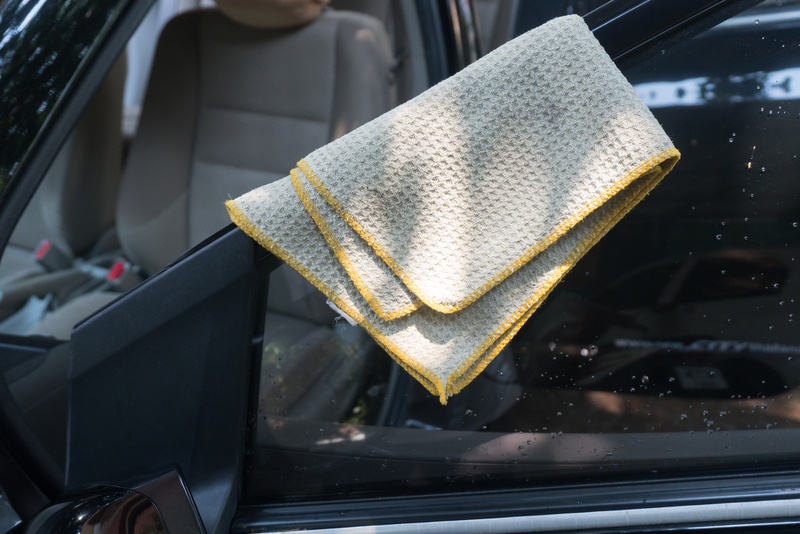How to Rid Your Window Sills of Mould Quickly and Easily
Posted on 22/09/2025
How to Rid Your Window Sills of Mould Quickly and Easily
Dealing with mould on window sills is not only unappealing but can also pose a potential health risk. Whether you have just noticed a patch of mold on your window ledges or you've been battling with it for some time, effective removal and long-term prevention are crucial. In this comprehensive guide, we'll show you how to eliminate mould from window sills effortlessly, restore your windows to their original glory, and keep your home healthy.
Why Does Mould Grow on Window Sills?
Mould is a fungus that thrives in moist, dark environments. Window sills can become ideal spots for mould growth due to several reasons:
- Condensation: Temperature differences between interiors and exteriors lead to water droplets accumulating on sills.
- Poor Ventilation: Insufficient air flow means moisture lingers on surfaces.
- Leaks: Damaged window frames or poor sealing allows water ingress.
- Neglected Cleaning: Dirt and dust can harbor spores and facilitate mould development.
Understanding the root cause of black mould on your window sills is the first step towards effective treatment and lasting prevention.

Health Risks Associated With Mould Exposure
Exposure to window sill mould can lead to various health issues, especially if it is black mould (Stachybotrys chartarum). Some risks include:
- Respiratory problems such as coughing, sneezing, and wheezing
- Asthma attacks and allergic reactions
- Skin irritation and rashes
- Eye irritation
- In severe cases, chronic lung conditions
This makes it imperative to get rid of mould on your window sills quickly and efficiently to safeguard your family's health.
Essential Supplies Needed to Remove Mould from Window Sills
Before starting, gather the following supplies for safe and effective mould removal:
- Protective gloves and a face mask
- Old clothing
- White vinegar, baking soda, hydrogen peroxide, or a commercial mould remover
- Spray bottle
- Soft brush or sponge
- Microfiber or disposable cloths
- Vacuum cleaner with a HEPA filter (to capture spores)
- Bucket of clean water
- Garbage bags for disposing contaminated materials
Step-By-Step Guide: How to Rid Your Window Sills of Mould Quickly
1. Preparation: Protect Yourself and Your Surroundings
- Wear protective gloves, a face mask, and old clothing. Mould spores can irritate your skin and lungs during the cleaning process.
- Open windows to ensure good ventilation and help dissipate airborne spores.
- Clear the area around the affected window sill. Remove curtains, blinds, or any items near the mould to avoid cross-contamination.
2. Initial Clean-Up
- Vacuum up dust and loose mould spores with a HEPA-filter vacuum. Dispose of the vacuum bag or contents safely afterwards.
- Do not dry-brush or sweep as this can release mould spores into the air.
3. Apply a Mould Removal Solution
You can choose between natural solutions or commercial mould removers:
- White vinegar: Fill a spray bottle with undiluted white vinegar. Spray liberally onto the mouldy area. Let it sit for at least 1 hour.
- Hydrogen peroxide: Use 3% hydrogen peroxide in a spray bottle and spritz onto the affected site. Allow 10 minutes to work.
- Baking soda: Mix 1 tsp of baking soda with 2 cups of water. Apply via spray bottle, scrub gently, and wipe clean.
- Commercial mould removers: Follow the product instructions for safe application.
Never mix vinegar with hydrogen peroxide, as this can produce harmful fumes.
4. Scrub and Remove the Mould
- Use a soft-bristled brush or sponge to gently scrub the area. Avoid using abrasive tools as these can damage wood or painted finishes.
- Wipe the area clean with a damp microfiber cloth.
Repeat the treatment if necessary until all visible mould is removed.
5. Rinse and Dry Thoroughly
- Wipe down the area with a clean, damp cloth to remove any remaining cleaning solution or mould residues.
- Dry the window sill thoroughly with a dry cloth. Excess moisture left behind can lead to rapid mould return.
6. Dispose of Contaminated Materials Safely
- Throw away used cloths, brushes, or sponges, or wash them in hot water with disinfectant.
- Bag up and dispose of vacuum contents immediately.
7. Optional: Treat With a Mould Inhibitor
To prevent mould from coming back on window sills, apply a mould inhibitor spray or solution as per the manufacturer's guidance for lasting protection.
How to Remove Black Mould from Wooden Window Sills
Wooden window sills are especially prone to damage from mould and moisture. Here is how you can get rid of black mould on wooden window sills:
- Avoid over-wetting the wood. Use slightly damp (not soaking) cloths and ensure the area dries quickly.
- Follow up with a wood-safe disinfectant to prevent future growth, and consider sanding and refinishing particularly damaged patches.
- Check for rot. If the wood feels soft or crumbly, it may need professional repair or replacement.
Natural Remedies vs. Commercial Cleaners: What's the Best Option?
Both approaches can be effective for cleaning mould off window sills. Here's a comparison:
- Natural remedies (like vinegar and baking soda) are environmentally friendly, non-toxic, and ideal for households with children or pets. However, they may require repeat applications for tougher infestations.
- Commercial mould removers provide rapid results, especially for persistent or deep-seated mould. Always use them as directed and ensure good ventilation.
Preventing Mould From Returning to Your Window Sills
Once you've removed the visible mould, it's crucial to prevent new mould from growing on your window frames and sills. Adopt these strategies:
- Fix leaks and improve window seals: Address any water entry points immediately.
- Increase ventilation: Open windows or use extractor fans, especially in high-humidity rooms like kitchens and bathrooms.
- Use a dehumidifier: Keep indoor humidity below 60% to discourage mould growth.
- Clean window sills regularly: Wipe down surfaces to remove condensation, dust and potential mould spores.
- Apply a mould-resistant paint or sealant: These treatments create an inhospitable environment for new spores.
When to Call a Professional for Window Sill Mould Removal
While small patches of mould on your window ledges can usually be treated at home, there are situations where you should seek professional help:
- The mould patch covers more than one square meter.
- It keeps reappearing despite your best efforts.
- You notice mould growing inside the window frame or wall cavity.
- There are signs of rot, water damage, or unusual odors.
- Anyone in your home experiences severe allergic reactions or chronic respiratory symptoms.
Certified mould remediation specialists can assess the problem and use advanced techniques to decontaminate your home safely.

Frequently Asked Questions about Mould Removal on Window Sills
How often should I check for mould on window sills?
It's wise to inspect your window sills at least monthly, especially during rainy seasons or in rooms prone to condensation (like bathrooms and kitchens).
Is bleach safe for removing mould from window sills?
While bleach is effective at killing surface mould, it doesn't always penetrate porous materials like wood, and fumes can be hazardous. White vinegar or hydrogen peroxide are safer alternatives.
Can mould on window sills cause permanent damage?
Yes, if left untreated, mould can damage paint, wood, and window frames, leading to costly repairs or replacements.
Will repainting cover up the mould?
No - never paint over mould! Instead, remove the mould first, allow the area to dry thoroughly, and use a mould-resistant primer and paint for added protection.
Why does mould grow repeatedly in the same spot?
Recurrence usually indicates an ongoing moisture problem--such as hidden leaks, poor ventilation, or persistent condensation--that needs to be corrected for a permanent fix.
Summary: Keeping Your Window Sills Mould-Free
With the right techniques, it's possible to quickly and easily rid your window sills of mould. Regular inspection, rapid response to moisture, and consistent cleaning are the building blocks of a mould-free home. By acting at the first sign of trouble and addressing any underlying issues, your window sills can stay clean, beautiful, and safe for years to come.
If you found this guide on how to remove mould from window sills useful, don't hesitate to share it with others or save it for future reference. For ongoing tips on household maintenance and cleaning, explore the rest of our site!


